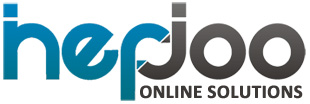
This article aims to provide a comprehensive understanding of the key differences between Google AdWords and SEO/SEM. Both Google AdWords and SEO/SEM are digital marketing strategies used by businesses to increase their online visibility and drive traffic to their websites.
Google AdWords is a platform from Google that lets businesses create and show ads on its search engine results pages. SEO and SEM are techniques that aim to improve a website’s organic ranking in search engine results.
This article highlights the main differences between these two strategies, such as their target audience and reach, long-term versus short-term outcomes, and how they can be combined for maximum effectiveness.
By analyzing these differences, readers will gain insights into which strategy may be more suitable for their specific marketing goals. This analysis will be informed by a knowledgeable, analytical, detail-oriented approach that aims to provide understanding for an audience seeking clarity on the topic.
Key Takeaways
- Google AdWords provides immediate visibility and quick results, while SEO/SEM strategies focus on long-term organic growth and credibility.
- Coordinating keywords used in AdWords campaigns with SEO/SEM strategies improves search engine rankings and increases the chances of reaching the target audience.
- Sharing data between AdWords and SEO/SEM campaigns provides valuable insights into user behavior and allows for better optimization of both tactics.
- Using the same landing pages for both AdWords ads and SEO/SEM optimization helps ensure a consistent message and user experience, which leads to increased conversions and customer engagement.
Understanding Google AdWords
Google AdWords is an online advertising platform by Google. It lets businesses create, manage, and improve paid ads shown on search engine results pages. The ads are tailored to users’ search queries.
With Google AdWords, businesses can reach a wide audience and bring targeted traffic to their websites. Businesses can improve their visibility in search engine results and attract potential customers by focusing on specific keywords or phrases related to their products or services.
The platform provides tools for managing ad campaigns, monitoring performance, and adjusting strategies to maximize effectiveness. It is a crucial component of digital marketing strategies as it offers the opportunity for immediate visibility and measurable results.
Understanding how Google AdWords works sets the foundation for understanding SEO/SEM strategies that complement its objectives.
Understanding SEO/SEM
In online marketing, optimizing websites and using paid advertising can help increase visibility, attract more visitors, and drive conversions. This approach is known as search engine optimization (SEO) and search engine marketing (SEM).
SEO focuses on improving a website’s ranking in organic search results by optimizing its content, structure, and user experience. It involves keyword research, on-page optimization, link building, and technical optimizations.
SEM includes paid advertising techniques like Google Ads (previously called Google AdWords), where advertisers bid on keywords to show their ads in search engine results.
These two strategies work together to maximize a company’s online presence and reach.
Transitioning into the subsequent section about the purpose of Google Ads highlights how this platform complements SEO efforts in an effective marketing strategy.
Purpose of Google AdWords
Google Ads is used to show businesses ads that match what users are searching for. This helps businesses make their products or services more visible.Google AdWords, now called Google Ads, is an advertising platform where advertisers bid on keywords to display their ads on search engine results pages (SERPs) through pay-per-click (PPC) campaigns. This means that when users search for certain keywords related to the advertiser’s business, their ads may appear at the top or bottom of the SERP. The purpose of Google AdWords is to drive immediate traffic and generate leads through paid advertising. It provides businesses with an opportunity to reach a wider audience and increase brand awareness. In contrast, SEO/SEM focuses on optimizing websites and content organically for better visibility in search engine rankings. Transitioning into the subsequent section about ‘purpose of SEO/SEM’, it is important to understand how these strategies work together in digital marketing campaigns.
Purpose of SEO/SEM
One of the primary objectives of implementing SEO/SEM strategies is to enhance online visibility and drive targeted traffic to a website. This ultimately increases the chances of gaining credibility and potential conversions.
SEO (Search Engine Optimization) focuses on optimizing a website’s content, structure, and user experience to rank higher in organic search results. The goal is to improve relevance and authority for specific keywords, attracting organic traffic from search engines.
SEM (Search Engine Marketing) encompasses various paid advertising methods like Google AdWords. It involves bidding on keywords to display ads prominently on search engine results pages or partner websites. The purpose of SEM is to generate immediate visibility and drive targeted traffic through paid advertisements.
Understanding these differences between SEO/SEM and their purposes will enable businesses to develop effective digital marketing strategies that align with their goals.
The key differences between Google AdWords and SEO/SEM will be explored in the subsequent section without writing ‘step’.
Key Differences between Google AdWords and SEO/SEM
A notable distinction exists in the approaches and strategies employed by Google AdWords and SEO/SEM.
Google AdWords, also called Google Ads, is a platform for advertising where businesses can show their ads on Google search pages and pay for each click. It focuses on targeting specific keywords and demographics to drive immediate traffic to a website.
SEO/SEM is about improving a website’s visibility and ranking in search engine results. This is done through techniques like keyword research, creating content, building links, and optimizing the website’s technical aspects.
While both contribute to a comprehensive digital marketing strategy, Google AdWords provides instant visibility with paid ads while SEO/SEM aims for long-term organic growth. This key difference highlights the need for businesses to carefully consider their objectives and budget when deciding between these two approaches.
Cost Comparison: Google AdWords vs. SEO/SEM
Cost is an important factor in choosing the best way for businesses to improve their online presence and attract visitors to their websites. When comparing the cost of Google AdWords and SEO/SEM, several factors should be taken into account:
- Google AdWords operates on a pay-per-click (PPC) model, allowing businesses to set a budget and pay only when someone clicks on their ad. To evaluate the effects of Google AdWords and SEO/SEM on online presence and business growth, we must analyze their short-term and long-term outcomes.
- SEO strategy focuses on organic search rankings, which require ongoing efforts such as optimizing website content, building high-quality backlinks, and improving user experience. These activities may involve hiring an SEO specialist or agency.
- SEM campaigns involve both paid advertising through platforms like Google AdWords and organic optimization efforts like SEO.
- The cost of SEO/SEM depends on various factors such as competition level, industry specificity, keyword difficulty, and geographical targeting.
Considering these aspects is essential for businesses to make informed decisions about allocating resources between Google AdWords and SEO/SEM campaigns.
Transitioning into the subsequent section about ‘targeting and reach: Google Ads vs. SEO/SEM,’ it is important to understand how these aspects impact overall marketing strategies.
Targeting and Reach: Google AdWords vs. SEO/SEM
Targeting and reach are key considerations when comparing the effectiveness of Google AdWords and SEO/SEM in enhancing online presence and driving traffic to websites.
Google AdWords allows advertisers to target specific keywords and demographics, ensuring their ads are shown to relevant audiences. This targeted approach increases the likelihood of reaching potential customers who are actively searching for products or services.
Additionally, Google AdWords offers extensive reach through its vast advertising network, including search results pages, websites, and mobile apps.
On the other hand, SEO/SEM focuses on optimizing a website’s content and structure to improve organic search rankings. While this can generate long-term visibility and attract organic traffic, it may not have the same immediate reach as Google AdWords.
When comparing Google AdWords and SEO/SEM, we need to look at how their targeting and reach strategies affect their effectiveness in achieving desired outcomes.
Long-Term vs. Short-Term Results: Google AdWords vs. SEO/SEM
To assess the long-term and short-term outcomes of Google AdWords and SEO/SEM, we need to analyze their different time frames and how they can affect online presence and business growth.
With Google AdWords, businesses can achieve immediate visibility by displaying ads at the top of search engine result pages (SERPs). This approach allows for quick results in terms of website traffic and conversions.
On the other hand, SEO/SEM strategies focus on optimizing a website’s organic search ranking over time. While this may take longer to see tangible results, it can lead to sustained organic traffic and higher credibility in the long run.
By leveraging both approaches simultaneously, businesses can maximize their online impact by combining short-term gains from Google AdWords with long-term benefits from SEO/SEM efforts.
Combining Google AdWords and SEO/SEM is crucial for successful online marketing.
Integrating Google AdWords and SEO/SEM for Maximum Impact
To optimize online marketing efforts and achieve maximum impact, it is crucial to strategically integrate the complementary techniques of Google AdWords and SEO/SEM. This integration allows businesses to leverage the strengths of both methods, resulting in a more comprehensive and effective online presence.
Here are four key ways to integrate Google AdWords and SEO/SEM for maximum impact:
- Keyword coordination: Aligning keywords used in AdWords campaigns with those targeted in SEO/SEM strategies ensures consistency across platforms and improves search engine rankings.
- Data sharing: Sharing data between AdWords and SEO/SEM campaigns provides valuable insights into user behavior, allowing for better optimization of both tactics.
- Landing page synergy: Coordinating landing pages used in AdWords ads with those optimized for SEO/SEM helps maintain a consistent message and user experience, increasing conversions.
- Remarketing opportunities: Utilizing remarketing lists from AdWords within SEO/SEM campaigns allows for customized messaging to users who have previously interacted with the brand.
By integrating these techniques, businesses can maximize their online marketing efforts, effectively reaching their target audience across multiple channels.
When choosing the right strategy, you should consider factors like budget, goals, and timeline instead of following a step-by-step process.
Choosing the Right Strategy: Google AdWords or SEO/SEM
To choose the best marketing strategy, you need to think about your budget, goals, and timeline. This will help you make a smart decision that connects with your audience and gets the best outcome.
Choosing between Google AdWords and SEO/SEM depends on various factors.
Google AdWords is a paid advertising platform that allows businesses to display their ads on search engine results pages (SERPs). It provides immediate visibility and can be highly targeted based on keywords, demographics, and user behavior.
On the other hand, SEO/SEM focuses on improving organic search rankings through keyword optimization, content creation, and link building. It is a long-term strategy that requires consistent effort but can generate sustainable traffic over time.
The decision to use either Google AdWords or SEO/SEM depends on the individual needs of each business. It’s a question of whether they want quick visibility or are willing to invest in long-term organic growth.
Conclusion
Understanding the differences between Google AdWords and SEO/SEM is crucial for effective digital marketing strategies.
Google AdWords is an incredibly powerful tool for online advertising that allows you to quickly and efficiently reach your desired audience, delivering impressive results. SEO/SEM, on the other hand, aims to improve search rankings organically for long-term traffic.
Both approaches have their advantages and can be integrated for maximum impact.
Choosing the right strategy depends on factors such as budget, timeline, and marketing goals.
By carefully considering these factors, businesses can optimize their online presence and achieve success in the competitive digital landscape.
